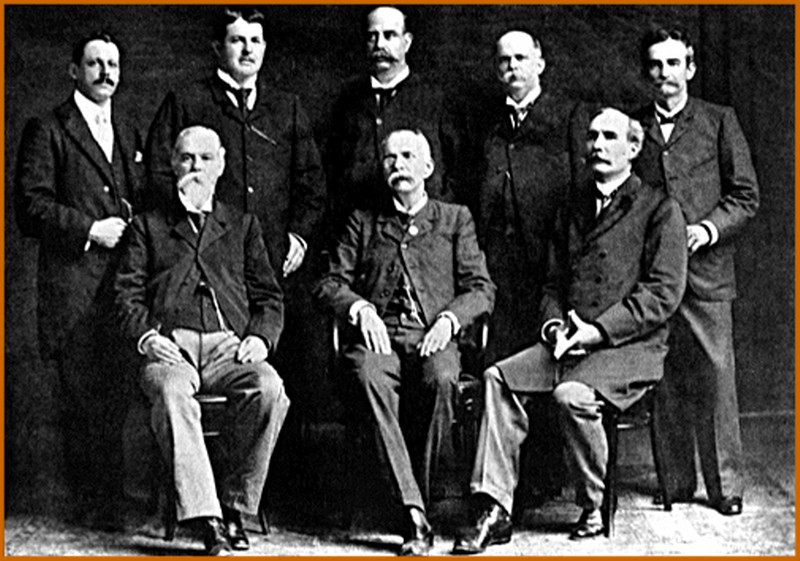Panama’s Independence, Separation and its relation to the Panama Canal

Panama becomes independent from Spain and voluntarily joins “Great Colombia” with the idea of forming one country together with Venezuela, Ecuador and Colombia.
This country lasts only for a short time, soon becoming the “Republic of Colombia”. The Isthmus becomes subject to abandonment and neglect. These factors, among others, lead to the formation of several separatist movements, which result in separation from Colombia in November 1903.
During the month of November, the following dates are historically significant and represent a month of patriotism in Panama.
November 3: Panama’s separation from Colombia
November 4: Flag’s day
November 5: Consolidation of the separation from Colombia
November 10: Declaration of Independence in “La Villa de Los Santos"
November 28: Independence of Panama from Spain
It is critical to consider the meaning of “independence” and “separation” as the patriotic acts of Panama, because Panama became independent from Spain and later it separated from Colombia.
With this in mind, let’s look at the events that lead to Panama becoming a sovereign and independent nation.
After Spanish colonization around 1821, ideas of revolution and independence surged. Abuses by the Spanish Empire led to a battle for the Independence, which started in La Villa de Los Santos; it is for this reason November 10 is known as the “First Yell for Independence.” It took until November 28, 1821 for Panama to be declared independent. At this point, Panama made the decision to freely join “Great Colombia” along with Venezuela, Ecuador and Colombia (Note: At that time it was not yet the Republic of Colombia).
How does Panama separate from what was left of Great Colombia?
The answer is closely related to the creation of the Panama Canal. The idea of creating an Inter-oceanic Canal between the Atlantic Ocean and the Pacific Ocean had been around for several years. But it wasn’t until 1876 that the French officially showed an interest in taking on the project. At this time, Panama had become part of Colombia, so the French signed a treaty with Colombia in order to begin studies and construction on the canal; this treaty was known as the “Wyse Grant”.
Under this treaty, the French began construction of the Canal through Panama but they faced several problems, including combating diseases such as malaria and yellow fever. At that time people didn’t know how these diseases were transmitted, it was believed they were result of gases emitted from the excavations.
These two diseases decimated the labor force working for the French company in charge of building the Canal. By 1889 the French went bankrupt, failing to complete the project.
Three key factors in Panama’s separation:
France with Philippe-Jean Bunau-Varilla: Philippe-Jean Bunau-Varilla was in charge of the canal project at the time of its failure. He was also a shareholder of the now bankrupt, French company.
The United States: At this time the United States were interested in an Inter-oceanic Canal for military and commercial strategies. Because of influence from the U.S. senate, they were inclined to create an alternative Canal through Nicaragua.
Separatist Movement in Panama: From the beginning of Panama’s union with Great Colombia, the Isthmus witnessed several failed separatist movements. However, around the time of the failed attempt to build the canal by the French, a separatist movement led by Manuel Amador Guerrero was in process. Guerrero, along with several others dreaming of a completely independent Republic fought against Colombia’s neglect towards Panama.
With these three elements in play and his own interests in mind, Bunau-Varilla turned to the United States, offering them the Canal project in an effort to get back some of the money the French had invested. However as previously stated, in 1902 the U.S. Government led by Theodore Roosevelt, was more inclined to construct an inter-oceanic channel through Nicaragua.
The Stamp that changed history Bunau-Varilla, in desperation to sell the Panama Canal project, sent a letter to each U.S. Senator with a 1-cent stamp of Nicaragua’s Momotombo volcano in an eruption, showing the danger of volcanic activity in Nicaragua. This strategy helped win the approval of the U.S. senate, encouraging them take on the Panama Canal as opposed to creating a similar one through Nicaragua.
Bunau-Varilla, in desperation to sell the Panama Canal project, sent a letter to each U.S. Senator with a 1-cent stamp of Nicaragua’s Momotombo volcano in an eruption, showing the danger of volcanic activity in Nicaragua. This strategy helped win the approval of the U.S. senate, encouraging them take on the Panama Canal as opposed to creating a similar one through Nicaragua.
In January 1903, the “Herrán-Hay” treaty between the United States and Colombia was signed in order to continue the canal trough the Isthmus of Panama, but the Colombian Congress rejected the treaty.
U.S. President Theodore Roosevelt saw the rejection as a threat to the Inter-oceanic Canal project, and put his support behind the Panamanian separatist movement. Panama’s leader, Manuel Amador Guerrero, traveled to the United States and while there, Guerrero held a meeting with Bunau-Varilla who was also interested in the United States taking on the canal project started by the French.
The help of French Bunau-Varilla came with a high price. Once the new nation was proclaimed and Panama received diplomatic recognition from the United States, Bunau-Varilla had to be named Plenipotentiary Minister of the new Republic. This would give him the faculty of negotiating the new Canal Treaty with the United States. Bunau-Varilla signed a treaty giving the Canal Zone to the United States for eternity (later in 1977 the “Torrijos-Carter” treaty reverted this agreement promising to give back the Panama Canal to the Panamanian people by the 31 of December of 1999).
